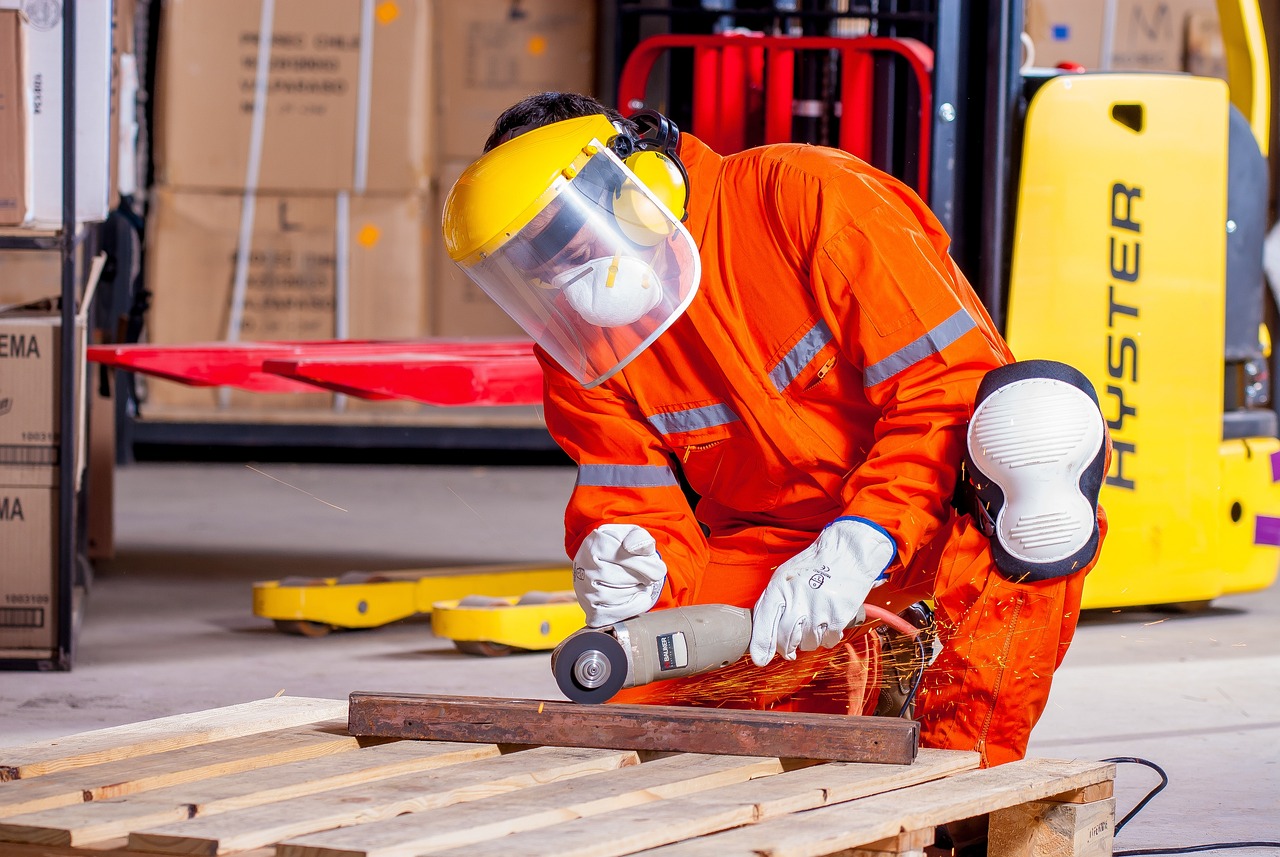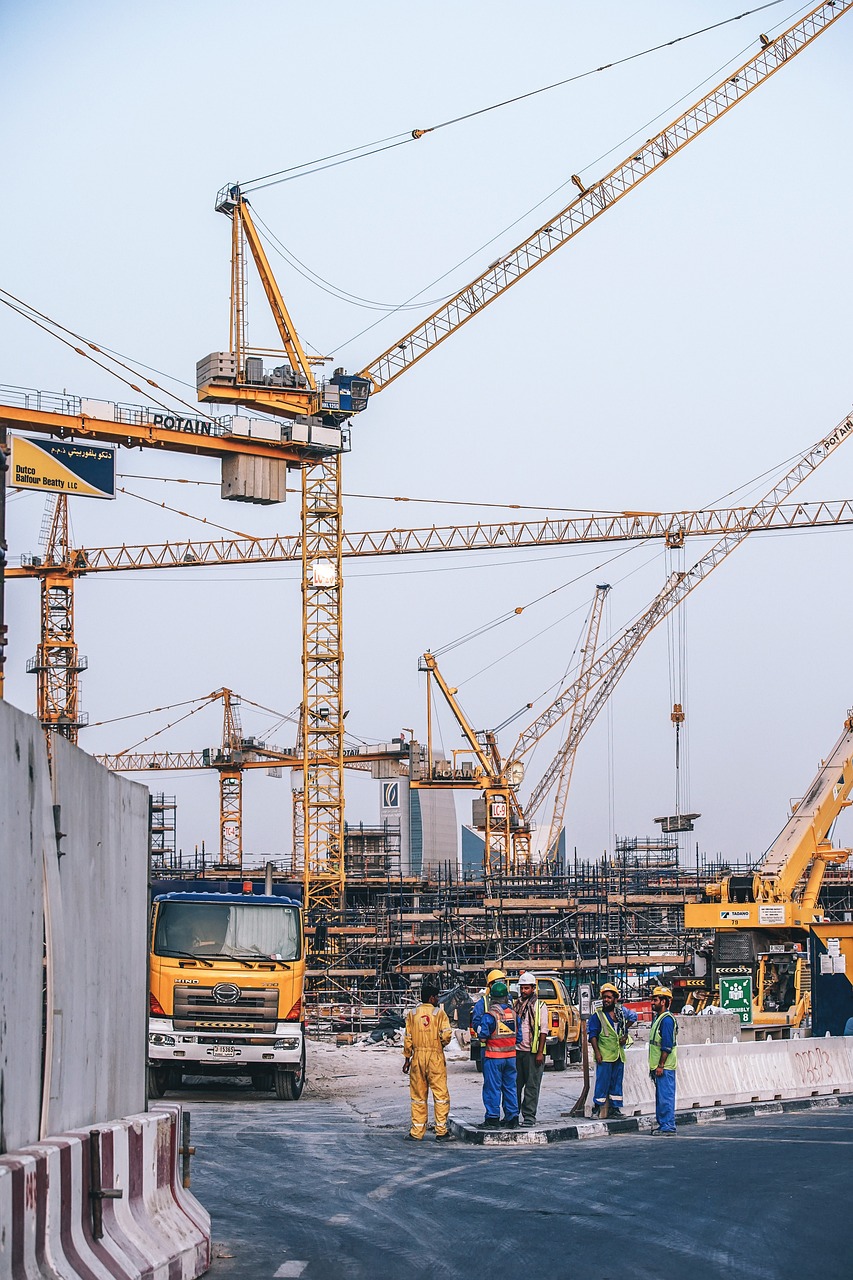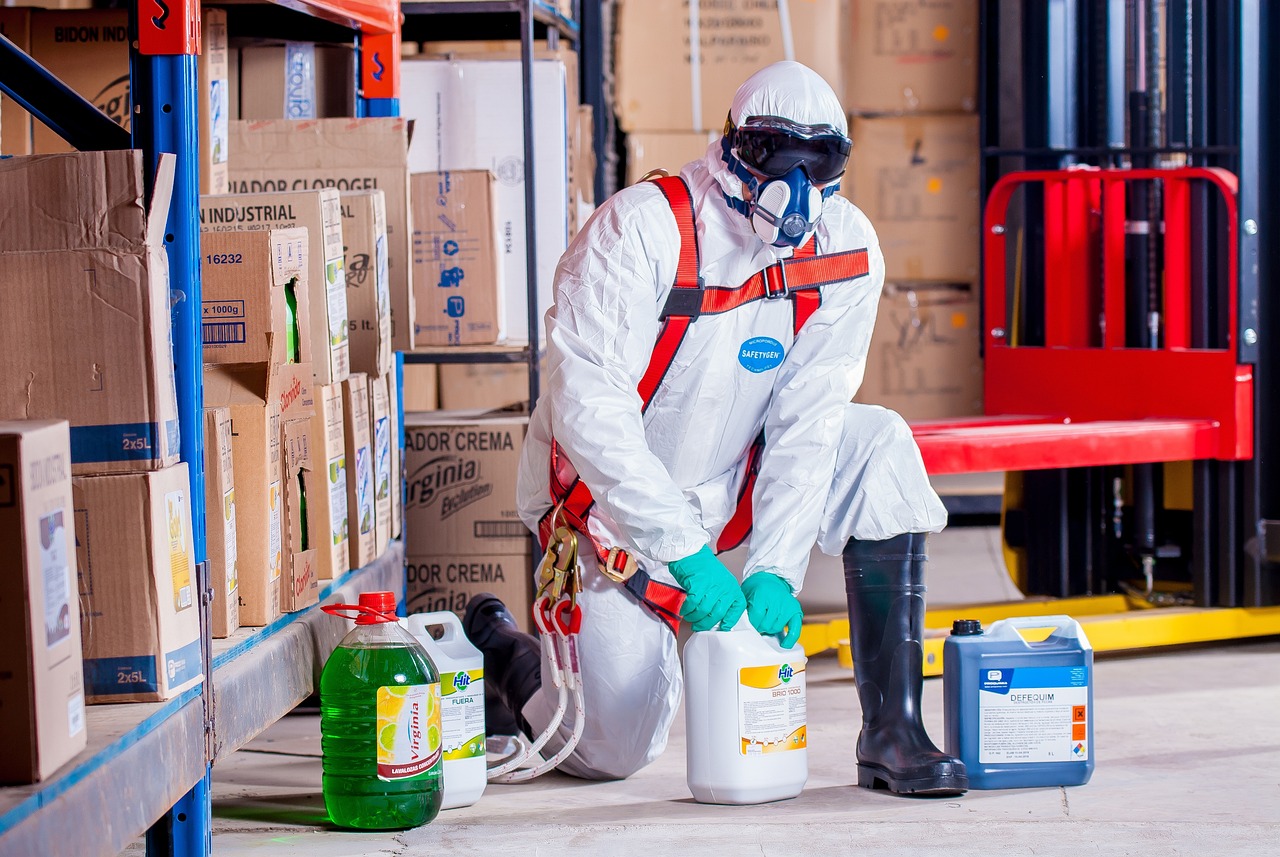In the fast-paced world of industrial settings, operating heavy-duty die grinders is a daily task that requires utmost caution. This article addresses the important safety considerations that must be kept in mind while using these powerful tools. From understanding proper handling techniques to wearing appropriate personal protective equipment, this piece serves as a friendly reminder of the essential precautions necessary to ensure a safe and productive work environment. So let’s dive into the world of heavy-duty die grinders and discover how to operate them safely in industrial settings.

Personal Protective Equipment (PPE)
Head protection
When operating heavy-duty die grinders in industrial settings, it is crucial to wear appropriate head protection. This includes wearing a hard hat to protect your head from falling objects or potential bumps and bruises. A hard hat with a suspension system is recommended to provide additional comfort and impact resistance.
Eye protection
Your eyes are extremely vulnerable to flying debris, sparks, and dust particles when using a die grinder. Wearing safety goggles or a face shield is essential to protect your eyes from potential hazards. Safety goggles should fit snugly against your face to provide a secure shield, while a face shield offers additional protection and coverage.
Hearing protection
The noise generated by heavy-duty die grinders can reach high decibel levels and pose a risk to your hearing. To prevent hearing damage, it is important to use appropriate hearing protection. Earplugs or earmuffs should be worn to reduce the exposure to loud noises and ensure your hearing remains protected.
Respiratory protection
When working in environments where dust, fumes, or airborne particles are present, using respiratory protection is necessary. Heavy-duty die grinders can generate significant amounts of dust and debris, which can be harmful if inhaled. It is recommended to wear a respirator or a dust mask that is designed to filter out these hazardous particles and ensure the safety of your respiratory system.
Machine Safety Features
Dual-action safety trigger
One of the safety features to look for in a heavy-duty die grinder is a dual-action safety trigger. This type of trigger requires the user to engage both hands to operate the tool, reducing the risk of accidental startup. By requiring intentional activation, the dual-action safety trigger helps avoid unintended operation and potential injuries.
Safety lock-out switch
A safety lock-out switch is another crucial feature to consider when purchasing a die grinder. This switch is designed to prevent accidental activation of the tool. The lock-out switch should be easily accessible but difficult to engage accidentally. It ensures that the grinder remains inoperable when not in use, minimizing the risk of injuries caused by unauthorized use or accidental starting.
Adjustable speed control
An adjustable speed control feature allows you to vary the speed of the die grinder according to the task at hand. This feature not only enhances the precision and efficiency of your work but also contributes to safety. Different materials and tasks may require different speeds, and being able to adjust the grinder’s speed helps prevent accidents and ensures the tool’s proper operation.
Anti-kickback feature
Kickbacks can occur when the grinder’s wheel becomes jammed or bites into the material being worked on. These sudden movements can be dangerous and result in injuries. To mitigate this risk, look for a die grinder with an anti-kickback feature. This feature is designed to minimize the likelihood of kickbacks by automatically stopping the grinder’s rotation when kickback is detected.
Proper Tool Selection
Choose appropriate power source
When selecting a heavy-duty die grinder, it is important to choose the appropriate power source. Electric-powered grinders are commonly used in industrial settings due to their reliability and consistent power output. However, pneumatic grinders powered by compressed air are also popular. Consider the specific requirements of your work environment and select a grinder that aligns with the available power sources and meets your needs.
Select grinder with suitable RPM range
Different grinding tasks require different speeds. It is crucial to select a die grinder that offers a suitable RPM (rotations per minute) range for your specific applications. Higher RPMs are often necessary for tasks involving metal or tough materials, while lower RPMs may be more suitable for delicate or precision work. Ensure that the grinder you choose has a range that accommodates your intended applications.
Ensure proper tool integrity
Before operating a heavy-duty die grinder, always inspect the tool to ensure its overall integrity. Check for any signs of damage, such as cracks or loose parts. A damaged tool can pose safety risks, as it might fail during operation or cause additional hazards. If any defects or issues are found, it is essential to address them promptly by repairing or replacing the tool.
Consider ergonomic features
Using a die grinder for extended periods can strain your hands, wrists, and arms. To mitigate the risk of repetitive strain injuries and enhance comfort, consider choosing a grinder with ergonomic features. Look for models that have features like rubberized grips or vibration-reducing handles. These ergonomic design elements can help minimize fatigue and enhance control during operation.
Pre-Operational Inspections
Inspect power cord and plug
Before using a heavy-duty die grinder, inspect the power cord and plug for any signs of damage. Damaged cords or plugs can result in electrical hazards, potentially causing shocks or fires. If any damage is found, the grinder should not be used until the cord or plug is repaired or replaced by a qualified professional.
Check for damaged or missing parts
Inspect the die grinder for any damaged or missing parts. This includes checking the grinding wheel, guards, and other components. Damaged or missing parts can affect the grinder’s performance and compromise your safety. If any parts are damaged or missing, they should be replaced or repaired before use.
Ensure proper grounding
Proper grounding is essential for electrical safety. Die grinders should be grounded properly to prevent electrical shocks. Before operating the grinder, ensure that the power source is grounded and functioning correctly. If you are unsure about the grounding or electrical connections, consult a qualified electrician to ensure your safety.
Inspect grinding discs
Inspect the grinding discs before each use to ensure they are in good condition. Check for any cracks, chips, or uneven wear. Damaged or worn-out discs can shatter or break during operation, posing a significant safety risk. If any issues are detected, replace the grinding discs immediately with ones that are in good working condition.

Safe Work Environment
Clear work area of debris
Before starting any grinding operation, ensure that the work area is clear of debris, tools, or any other obstructions. Clearing the work area helps prevent tripping hazards and allows for better maneuverability. It is important to maintain a clean and clutter-free workspace to minimize the risk of accidents and injuries.
Secure workpiece
When using a heavy-duty die grinder, it is crucial to secure the workpiece properly. Unstable or improperly secured workpieces can shift or move during grinding, resulting in accidents. Use clamps, vices, or other appropriate methods to firmly secure the workpiece before starting any grinding operation.
Control flammable materials
Grinding generates sparks and heat, which can be dangerous if they come into contact with flammable materials. Ensure that the work area is clear of any flammable substances, such as fuels, solvents, or other combustible materials. Taking precautions to control flammable materials reduces the risk of fires or explosions while using a die grinder.
Provide adequate lighting
Proper lighting is essential for safe operation. Make sure the work area is well-lit to ensure good visibility of the workpiece and the grinder. Insufficient lighting can increase the risk of accidents and mistakes. Consider using additional lighting sources, such as task lights or overhead lights, to ensure optimal visibility during operation.
Safe Handling Techniques
Maintain a firm grip on the grinder
When operating a heavy-duty die grinder, it is crucial to maintain a firm grip on the tool throughout the entire operation. Ensure that your hands are positioned securely on the grinder’s handle and maintain a stable stance. A firm grip helps maintain control over the tool, reducing the risk of accidents and enhancing overall safety.
Avoid overexertion
Do not force the grinder or apply excessive pressure while grinding. Let the tool do the work and avoid overexertion. Applying excessive force can strain your muscles and increase the risk of accidents, such as losing control of the grinder or causing kickbacks. Always work at a comfortable pace and allow the grinder to move smoothly and naturally through the material.
Don’t obstruct the exhaust
The exhaust of a die grinder releases hot air and potentially harmful particles. It is important to avoid obstructing the exhaust with your hands or body. Blocking the exhaust can lead to overheating, decreased performance, or potential injury. Always position yourself and your hands in a way that allows the exhaust to dissipate freely without obstruction.
Use both hands when operating
When using a heavy-duty die grinder, always operate the tool with both hands. This provides better control and stability, minimizing the risk of accidents. Do not attempt to operate the grinder with one hand or while holding it in an awkward position. Using both hands ensures proper balance and control, allowing for safer and more effective grinding.

Preventing Kickbacks
Secure workpiece properly
One of the key measures to prevent kickbacks is to secure the workpiece correctly. Ensure that the workpiece is securely fastened, clamped, or held in place to prevent any movement or shifting. A stable workpiece reduces the chances of the grinder getting caught or causing sudden movements that can lead to kickbacks.
Avoid grinding in corners or edges
Grinding in corners or edges increases the risk of kickbacks. When using a die grinder, avoid approaching corners or edges directly. Instead, start the grinding process a safe distance away from corners or edges and gradually move towards them as necessary. This approach reduces the likelihood of jamming or binding, minimizing the risk of kickbacks.
Use appropriate pressure on the grinder
Applying excessive pressure on the grinder can increase the risk of kickbacks. Avoid pushing or forcing the grinder into the workpiece. Instead, allow the weight of the tool to apply the necessary pressure, using gentle and controlled movements. Using appropriate pressure helps maintain control and reduces the chances of sudden movements or kickbacks.
Do not force the grinder
Forcing the grinder can lead to kickbacks and other safety issues. If you encounter resistance while grinding, do not force the grinder through the material. Stop the operation, assess the situation, and address any underlying issues before proceeding. Forcing the grinder can cause it to bind or lock up, leading to potential accidents and injuries.
Dust and Debris Control
Use dust collection systems
To minimize the release of dust and debris generated during grinding, consider using dust collection systems. These systems help capture and contain the dust, reducing the amount of airborne particles. Utilizing a dust collection system is not only important for maintaining a clean work environment but also for protecting your respiratory health.
Wear a respiratory mask in dusty environments
In dusty environments, wearing a respiratory mask is essential to protect your lungs from inhaling harmful particles. Dust generated during grinding operations can contain various hazardous substances, including metals, silica, or other chemicals. Choose a properly fitted respirator mask that is capable of filtering out the specific particles present in your work environment.
Regularly clean work area
Maintaining a clean work area is crucial for safety. Regularly cleaning the work area helps remove dust, debris, and other potential trip hazards. Dispose of collected dust and debris properly to prevent contamination or secondary hazards. By keeping the work area clean, you create a safer environment for yourself and others working in the vicinity.
Dispose of debris properly
When disposing of grinding debris, ensure that it is done safely and in accordance with local regulations. Some materials generated during grinding operations might be hazardous and require special handling. Follow appropriate disposal procedures to minimize environmental impacts and ensure compliance with applicable regulations.
Training and Education
Receive proper training on grinder use
Before operating a heavy-duty die grinder, it is important to receive proper training on its safe and correct use. Training should cover topics such as machine operation, safety features, PPE requirements, and hazard identification. Proper training enhances your knowledge and skills, enabling you to operate the grinder safely and effectively.
Follow manufacturer guidelines
Always refer to the manufacturer’s guidelines and instructions when using a die grinder. The manufacturer provides valuable information regarding the grinder’s safe operation, maintenance, and any specific precautions to take. By following the manufacturer’s guidelines, you ensure that your grinder is being used correctly and in accordance with industry-approved practices.
Regularly update knowledge on safety procedures
Safety procedures and regulations evolve over time. It is important to stay updated with the latest safety practices and guidelines related to operating heavy-duty die grinders. Regularly consult industry publications, attend safety workshops, or participate in continuing education programs to enhance your knowledge and stay informed about changes in safety procedures.
Attend safety seminars
Attending safety seminars and workshops can provide valuable insights into industrial safety practices and procedures specific to heavy-duty die grinders. These events often feature experts and industry professionals who share their knowledge, experiences, and best practices. By attending safety seminars, you can gain new perspectives, learn from others’ experiences, and reinforce your commitment to safety.
Emergency Preparedness
Know location of emergency shut-off switches
In the event of an emergency, it is crucial to know the location of emergency shut-off switches. These switches are designed to quickly and safely shut down the grinder, cutting off the power supply in case of an accident or hazardous situation. Familiarize yourself with the location of these switches before operating the grinder to ensure a prompt response if needed.
Train employees on emergency procedures
If you work with a team or have employees operating heavy-duty die grinders, it is important to train them on emergency procedures. Ensure that all employees are aware of the emergency shut-off switches, evacuation routes, and other safety protocols. Conduct regular drills and refreshers to reinforce these procedures and ensure everyone is prepared to respond effectively in case of emergencies.
Keep a well-stocked first aid kit nearby
Accidents can happen despite the best safety practices. To be prepared for any injuries or medical emergencies, keep a well-stocked first aid kit nearby. The first aid kit should include essential items like bandages, disinfectants, and emergency contact information. Regularly check and replenish the supplies in the kit to ensure it is always ready for use.
Maintain clear communication channels
Clear communication is critical in maintaining a safe working environment. Ensure that appropriate communication channels are established and maintained within the workplace. This includes having a reliable means of communication, such as radios or intercom systems, and establishing protocols for reporting hazards, incidents, or emergencies. Effective communication helps facilitate a prompt response and ensures the safety of everyone involved.
By taking into consideration these safety considerations when operating heavy-duty die grinders in industrial settings, you can minimize the risk of accidents, injuries, and hazardous situations. Prioritizing personal protective equipment, utilizing machine safety features, practicing proper tool selection and handling techniques, conducting pre-operational inspections, maintaining a safe work environment, controlling dust and debris, receiving adequate training and education, preparing for emergencies, and fostering clear communication are all essential aspects of promoting a safe and productive workplace. Remember, safety should always be a priority when operating heavy-duty die grinders.



